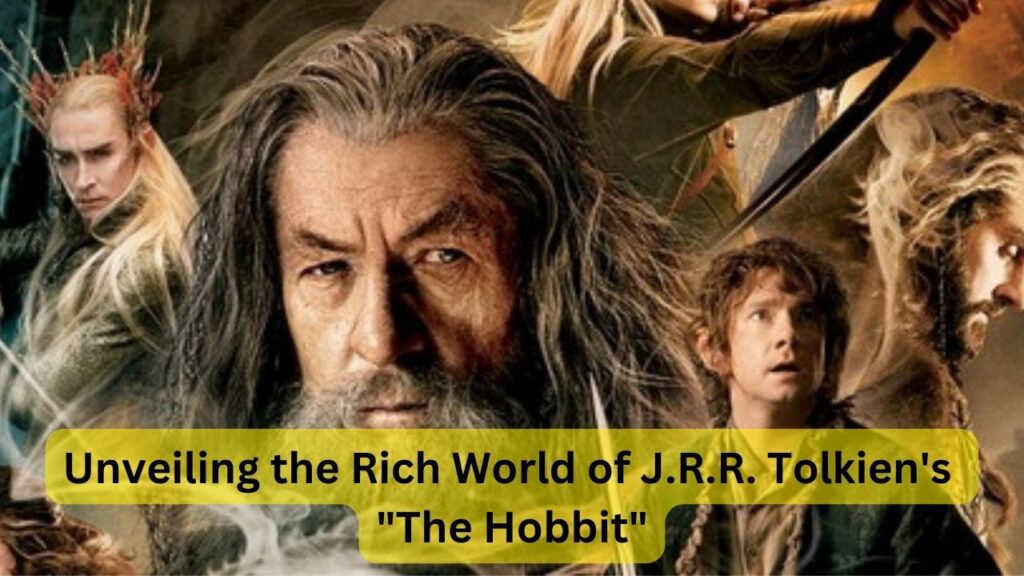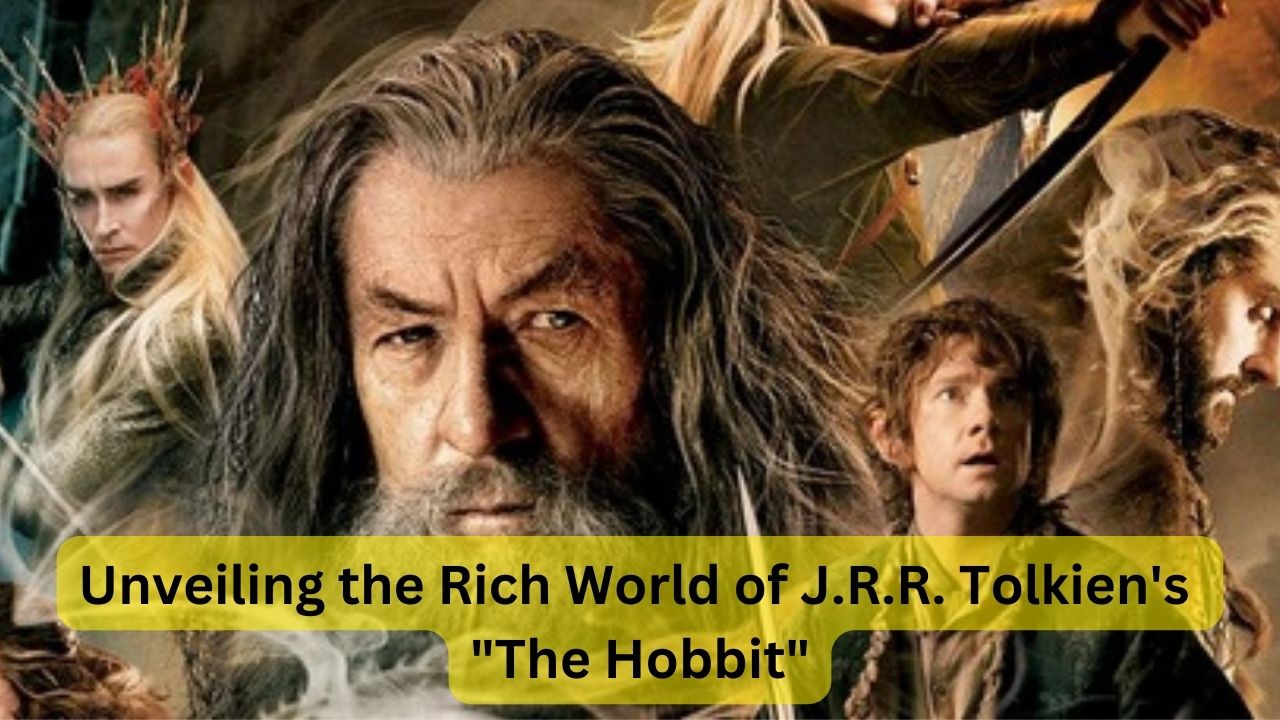
J.R.R. Tolkien, the mastermind behind some of the most beloved fantasy novels of all time, created a universe so rich and detailed that it continues to captivate readers around the globe. His works, particularly “The Hobbit” and “The Lord of the Rings,” offer an intricate blend of mythology, language, and storytelling that has set a gold standard in the fantasy genre. This article explores the elements that make Tolkien’s world so mesmerizing, focusing on “The Hobbit” and its extensive lore.
The Genesis of Middle-earth
Tolkien’s world-building is nothing short of remarkable. Middle-earth, the setting for both “The Hobbit” and “The Lord of the Rings,” is a land of profound depth and history. Tolkien, a philologist and a professor at Oxford, drew upon his vast knowledge of languages and ancient myths to create a world that feels both fantastical and authentic.
Creation Myths and Languages
Middle-earth’s richness starts with its creation myths, detailed in works like “The Silmarillion.” These myths provide a backdrop for the events in “The Hobbit,” introducing readers to the complex pantheon of gods and the early history of the world. Tolkien invented entire languages, such as Elvish and Dwarvish, which not only serve as cultural markers but also add layers of realism and immersion.
Geography and Races
The geography of Middle-earth is meticulously crafted, from the pastoral Shire to the desolate lands of Mordor. Each region has its own distinct characteristics and cultures. The races inhabiting Middle-earth – Hobbits, Elves, Dwarves, Men, and more – are all uniquely developed with their own histories, traditions, and languages, adding to the world’s diversity and depth.
The Charm of “The Hobbit”
Published in 1937, “The Hobbit” is often considered the gateway to Tolkien’s world. The novel follows the journey of Bilbo Baggins, a hobbit who is thrust into an epic adventure involving dwarves, a dragon, and a treasure. It is a tale of growth, courage, and discovery.
Bilbo Baggins: An Unlikely Hero
Bilbo Baggins starts as an ordinary hobbit who enjoys a quiet life in the Shire. His transformation into a clever and brave hero is one of the novel’s most compelling aspects. Bilbo’s journey is not just a physical adventure but also a metaphorical one, representing personal growth and the discovery of one’s potential.
The Dwarves and Their Quest
The company of dwarves, led by Thorin Oakenshield, adds richness to the story. Their quest to reclaim the Lonely Mountain and its treasure from the dragon Smaug is driven by a deep sense of heritage and revenge. The dwarves’ camaraderie, resilience, and sometimes their flaws, provide depth to their characters and the story.
Iconic Locations in “The Hobbit”
The Shire
The Shire, with its rolling hills and peaceful countryside, symbolizes the innocence and simplicity of hobbit life. It serves as a stark contrast to the dangers and wonders that Bilbo encounters on his journey.
Rivendell
Rivendell, the Elven refuge, is a place of beauty and tranquility. It represents the wisdom and ancient knowledge of the Elves. Bilbo’s stay in Rivendell is a moment of respite and learning, highlighting the contrast between the peaceful Elven way of life and the perilous adventure ahead.
Mirkwood
Mirkwood is a dark and foreboding forest that represents the perils and mysteries of the world. The journey through Mirkwood tests the company’s endurance and unity. It’s a place where the boundaries between reality and magic blur, emphasizing the enchanting yet dangerous nature of Middle-earth.
The Lonely Mountain
The Lonely Mountain, Erebor, is the ultimate destination of the quest. It is both a literal and symbolic representation of the dwarves’ lost homeland and their hope for redemption. The confrontation with Smaug the dragon is a climactic moment that tests Bilbo’s bravery and cunning.
Themes and Motifs
Heroism and Personal Growth
One of the central themes in “The Hobbit” is the idea of heroism and personal growth. Bilbo’s evolution from a timid hobbit to a cunning and brave hero underscores the notion that heroism comes in many forms and often from unexpected places.
Greed and Its Consequences
The theme of greed is prevalent, particularly in the character of Thorin Oakenshield and his obsession with the treasure of Erebor. This obsession leads to internal conflict within the company and highlights the destructive power of greed.
Friendship and Loyalty
The bonds formed between Bilbo and the dwarves highlight the importance of friendship and loyalty. These relationships are tested and strengthened throughout the journey, showcasing how trust and camaraderie can overcome great adversity.
Tolkien’s Influence and Legacy
Tolkien’s influence on the fantasy genre is unparalleled. His detailed world-building, complex characters, and intricate plots have inspired countless authors and filmmakers. The success of Peter Jackson’s film adaptations of “The Hobbit” and “The Lord of the Rings” trilogy has introduced Tolkien’s works to new generations, ensuring his legacy endures.
Impact on Literature
Tolkien’s meticulous approach to world-building has set a high standard in fantasy literature. His ability to create a living, breathing world has influenced authors like George R.R. Martin, J.K. Rowling, and many others. The depth and complexity of Middle-earth serve as a benchmark for aspiring fantasy writers.
Cultural Impact
Tolkien’s works have transcended literature, influencing various aspects of popular culture. From movies and video games to music and art, his creations have left an indelible mark. The themes of his stories – courage, friendship, and the battle between good and evil – resonate with audiences worldwide.
Conclusion
J.R.R. Tolkien’s world is a testament to his genius and dedication. “The Hobbit,” with its rich narrative and unforgettable characters, serves as the perfect introduction to Middle-earth. Tolkien’s ability to weave together mythology, language, and storytelling creates a universe that feels both magical and real. His works continue to enchant readers, proving that the allure of Middle-earth is timeless.
